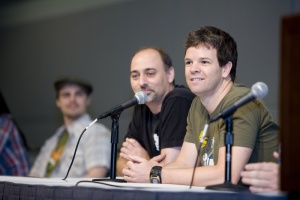
Photo by Alexandre Boucey on Unsplash
Okay guys, do NOT look away. I’m writing this editing rant because a male author got this HORRIBLY wrong.
Menstruation.
Women go through this all the time. And everyone in society should KNOW about how it impacts the people living through it – and by everyone, I mean male and female and whatever other genders there are – they need to know for their mothers and daughters and wives and coworkers and friends and kin and kith and strangers.
For the particular science fiction driving this editing rant, the world had been so far advanced people could use nanites to make themselves dragons, and teleport, and do everything. Then their science had a critical failure and everything started over. They had to learn to become farmers again instead of the machines doing everything. They had to learn to fight over scarce resources. They had to recreate governments.
And they had to learn to deal with bodies no longer under their total control. The women started menstruating, and the author devoted time in the training montage of adjusting to the new society to discussing how the society adjusted to this fact of life and biology.
I would be tickled about him including this important aspect of life … except …
He did it poorly.
The portion of the review applicable to today’s rant:
My biggest problem with the sexism in the book is when the menstrual cycles restart in women. (The science-fiction author) does do a good job of having the true-to-life wide-range of physical impacts, from just a few cramps to being curled in a ball for days. But the initial dissemination of information about it was totally unbelievable. I do not see women who have forgotten this problem ever existed immediately referring to it as “the curse.” Nor do I see immediately separating men from women to share the information and all the women saying “you don’t want to know”. And when the men finally figure out the “secret”, anytime the subject comes up thereafter cringing and walking away. I see the first reaction of sharing the information openly so a society in recovery knows that half their working population may be taken offline for a few days every month and how the problem can be dealt with. I also see the men curious because no one taught them it is a grody thing. Instead, everyone in the story treats it as unnatural, even while immediately looking at breeding animals and planting farms. I was thrown out of the story because it was not in-line with previously established social aspects. In a society of gods where everyone modified their body regularly, sometimes daily, not discussing a change of body only a couple months later is unreal.
I absolutely hated the disconnect between the world the author had built and the revert our present society’s TOXIC reaction to a bodily function. So not only was it sexist, it made all the careful crafting which had gone before irrelevant. Learn about menstruation folks and how to present it.
For something that takes up about seven YEARS of a woman’s life, just shy of 10% of her lifespan, literature leaves it a huge hole. The topic does get addressed during some Young Adult stories, when a female is coming of age, but that is pretty much it. On rare occasions, a woman in a romance might make a decision based on her cycle – usually what clothes to wear. Other than that, the lack of period is brought up more than having a period. Between teens and fifties, women spend three-to-seven days of 21-to-35 days dealing with a messy discharge – say on average 20% of their time during the “prime” of their life. Often with side effects including, but not limited to, cramping, nausea, migraines, and bloating.
If you include menstruation, for whatever reason, remember to do it right. At least half your audience KNOWS the topic well.
And for the love of goodness, stop the stigma – it isn’t a “curse”, nor a “secret visitor”, and don’t tell men “you don’t want to know”.



